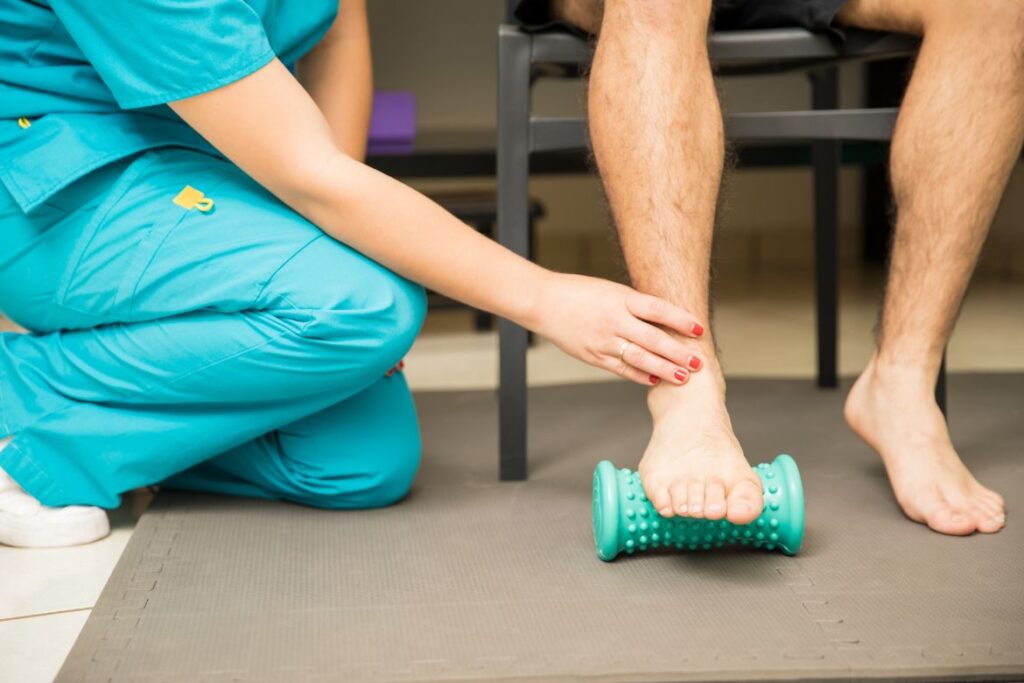Sharp pain in the heel can ruin even the shortest walk. But what might feel like a mystery to many is often treated with great precision behind clinic doors. Plantar fasciitis specialists use very specific, muscle-targeting tactics—not just general stretches or arch supports—to get real, lasting results.
Targeted Fascial Release for Persistent Heel Pain Relief
Plantar fasciitis pain doesn’t just sit in one spot—it hides deep within the connective tissue that anchors your heel to your toes. A plantar fasciitis specialist uses targeted fascial release to apply just the right amount of pressure in key tension zones. By releasing adhesion points within the plantar fascia, the treatment reduces tension where it hurts most: the heel insertion point and along the sole. This release method is slow, deliberate, and designed to work past surface muscles without causing strain.
It’s different from a general massage. These release techniques zero in on the fibrous tissue’s micro-knots and thickened spots that form from overuse or years of strain. Releasing these precise points can often bring a surprising wave of relief—not just from pain but from stiffness, too. A skilled plantar fasciitis doctor will often use their thumbs or specialized tools to carefully apply pressure that helps the fascia regain flexibility without overstretching it.
Deep Tissue Manipulation of the Plantar Arch
Digging deeper—literally—into the plantar arch, a plantar fasciitis specialist will often apply deep tissue manipulation. This technique focuses on the thick band of tissue that curves beneath the foot’s arch, which can become rope-like and rigid with repeated stress. Instead of broadly working the area, the specialist isolates layers of muscle and fascia, moving slowly with deliberate pressure.
This type of manipulation doesn’t just target the fascia—it also works on surrounding muscle groups that compensate during walking. Overworked flexor digitorum brevis and quadratus plantae muscles often go unnoticed in typical treatments. But by releasing these zones, circulation improves and inflammation settles. The result is a more responsive, supple arch that’s less prone to reinjury.
Custom Night Splints to Encourage Fascial Recovery
Night splints might not be flashy, but they play a vital role in isolating the plantar fascia during its most vulnerable time: sleep. A plantar fasciitis specialist may recommend a custom-fitted night splint to hold the foot in dorsiflexion, gently keeping the fascia extended. This prevents the common morning pain spike caused by sudden stretching after the tissue tightens overnight.
What sets a custom splint apart is its precision fit. Generic versions can pinch or misalign, but a proper one supports just enough to maintain length without forcing tension. Over time, wearing it regularly allows microtears in the fascia to heal properly, reinforcing the repair process that starts in the clinic and continues at home. For people who wake up dreading their first step of the day, this small device makes a big difference.
Therapeutic Ultrasound for Focused Tissue Healing
A lesser-known tool in a plantar fasciitis doctor’s therapy toolkit is therapeutic ultrasound. This isn’t diagnostic imaging—it’s a healing modality that uses sound waves to penetrate deep into soft tissues, stimulating cell activity and reducing inflammation at the source. The handheld device isolates pain zones under the heel and delivers high-frequency vibrations that improve blood flow.
This increased circulation carries more oxygen and nutrients to the area, speeding up the repair process. It’s particularly effective in chronic cases where scar tissue has built up over time. The ultrasound allows the specialist to focus specifically on damaged sections of the fascia without aggravating surrounding tissues, providing a controlled, non-invasive way to boost healing.
Controlled Foot Flexion Exercises for Targeted Strengthening
Not all movement helps. That’s why a plantar fasciitis specialist introduces controlled foot flexion exercises in therapy. These movements aren’t about going through the motions—they’re designed to build strength in key stabilizing muscles while avoiding strain on the healing fascia. Think short, isolated motions that engage the intrinsic foot muscles without overloading them.
Some exercises include towel scrunches, toe curls, or resisted dorsiflexion—all supervised to ensure proper form. These targeted motions help rebalance the load across the foot and ankle, preventing overcompensation by the heel. Over time, they help restore proper foot mechanics and lessen the chance of the pain returning.
Iontophoresis Applications to Isolate and Ease Inflammation
Iontophoresis sounds complex, but it’s a smart way to reduce inflammation without needles or pills. Using a low electric current, this method pushes anti-inflammatory medication directly through the skin and into the painful area. It allows a plantar fasciitis specialist to treat inflammation right where it lives—deep in the heel and arch—without affecting the rest of the body.
This isolated delivery can provide fast relief for those struggling with stubborn plantar fasciitis. By concentrating the treatment on a specific spot, it avoids the side effects of oral medication while providing a therapeutic dose exactly where it’s needed. It’s often used as part of a broader treatment plan to calm flare-ups and make physical therapies more comfortable.
Manual Trigger Point Techniques to Unlock Restricted Foot Muscles
Trigger points in the foot are sneaky. They form in tight muscle bands and send pain signals far beyond their origin. A plantar fasciitis doctor knows where these hidden knots live—often in the calf, arch, or even the small muscles under the toes—and uses manual trigger point release to deactivate them. This hands-on work interrupts pain loops and restores normal movement.
The process can be intense but effective. It involves applying sustained pressure directly onto the knot until it releases, which can send a rush of relief through the surrounding fascia. This release allows muscles to glide more easily and reduces tension pulling on the heel. It’s a vital step for those dealing with foot tightness and pain that just won’t quit.

